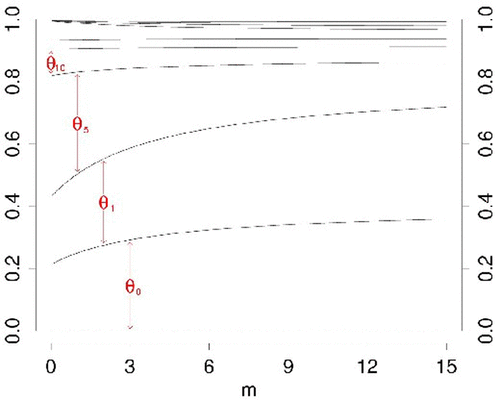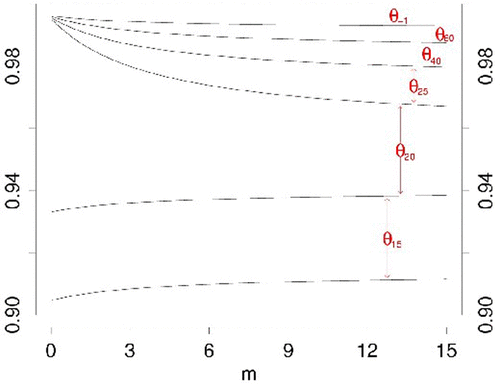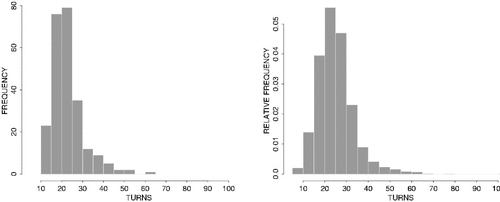Figures & data
Table 1. Position possibilities for the roll of a single pig.
Table 2. Pictorial representations of the six single-pig positions described in .
Table 3. Scoring table for all possible positive-scoring and zero-scoring configurations.
Table 4. Raw frequencies for the black-pink pig positions, based on 6000 rolls.
Figure 1: Partition of the (0, 1) vertical axis based on the posterior expectation of . The partition is a function of the hyperparameter m.

Figure 2: Partition of (0.9,1.0) vertical axis as magnified from . The partition is a function of the hyperparameter m.

Figure 3: Empirical distribution (left) and posterior predictive distribution (right) of the number of turns necessary to reach 100 points, assuming the conservative, one-roll-per-turn strategy.

Table 5. Five number summary for the minimum number of extreme-conservative strategy turns necessary to reach 100 points, as based on the data and 105 posterior predictive realizations.
Figure 4: Empirical distribution (left) and posterior predictive distribution (right) of the number of points accumulated on a single turn before the first penalty roll is observed.

Table 6. Five number summary for the number of points accumulated before the first penalty roll using the extreme-risk strategy, as based on the data and 105 posterior predictive realizations.
Table 7. Distribution of the gain in score X on the next roll, as based on maximum likelihood probability estimates.